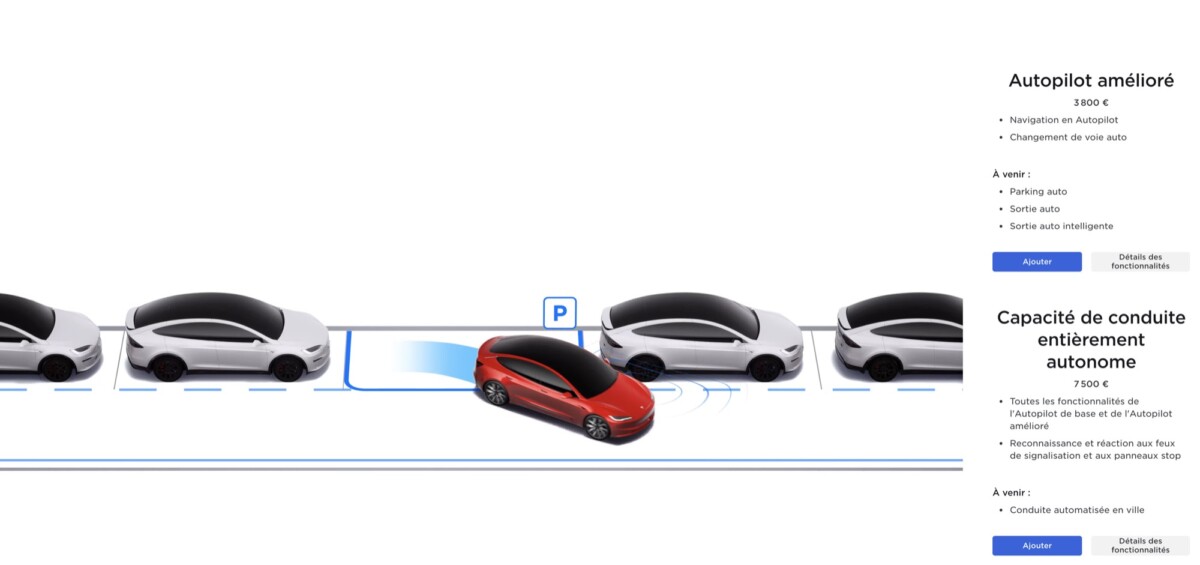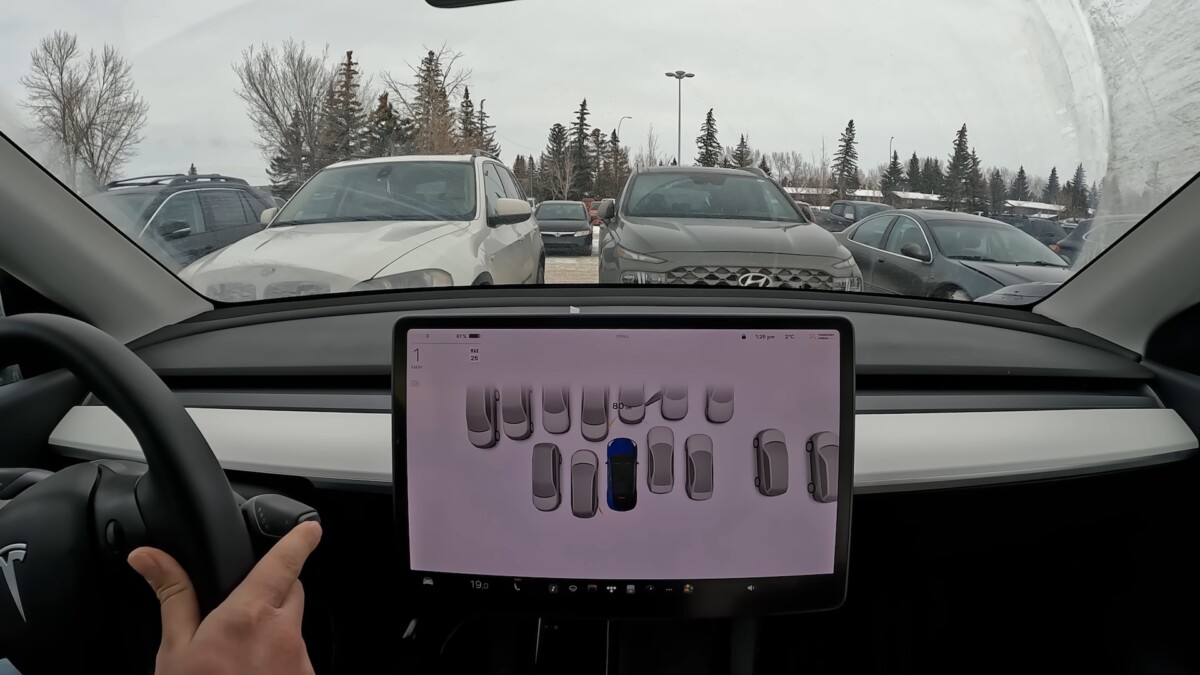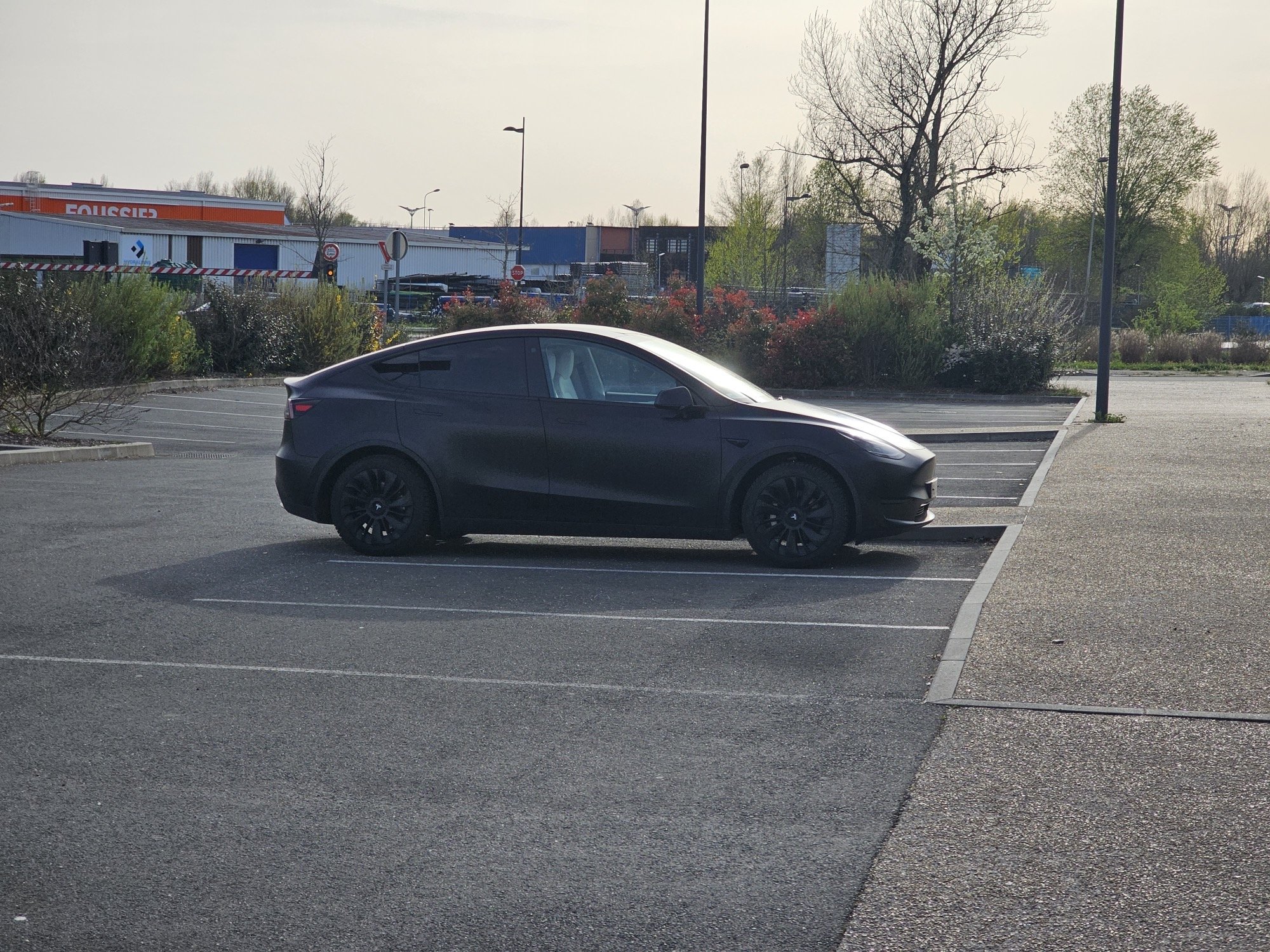If Tesla does indeed offer an automatic parking option, the reality is rather damning: it doesn’t work in most cases, and when it does, it’s not satisfactory. Let’s try to see why, in 2023, Teslas still park very poorly on their own.
Tesla has long been seen as a pioneer in driving assistance. Its Autopilot was also released to the general public in 2015, at a time when the combination of adaptive cruise control and lane keeping to offer level 2 semi-autonomous driving was quite unprecedented.
Since then, a lot of work has been done at Tesla, but with varying degrees of success. Some aspects of the original Autopilot still cannot be matched with hardware in currently produced vehicles.
Among the features which unfortunately are not satisfactory, we find automatic parking. The basic promise is simple, namely letting the car do the parking maneuver in the driver’s place, with the assurance of being correctly parked. What makes Tesla struggle to offer decent automatic parking, where others manage it more easily?
My Tesla parks itself, but poorly
Since the availability of the Improved Autopilot option at Tesla – at 3,800 euros – we have found a feature that promises a lot of things: auto parking. Finally, more precisely, we found it, since this functionality has disappeared (temporarily) since Tesla removed ultrasonic sensors, and relies solely on cameras for driving assistance.

Auto Parking is still noted on the online configurator as a “coming soon” feature across the range, and the user manual still makes clear reference to it. Teslas equipped with ultrasonic sensors can still benefit from the appropriate option today, but it is not at the level of what the best manufacturers are doing in this exercise.
The last video that Tesla published on the subject dates from April 2018, and just looking at the size of the place, we understand that its interest is limited.
Let’s take a look at the other brands to see what they offer, and try to understand what makes Tesla unable to match them.
Hyundai, BMW, Xpeng or Honda manage to do better
Since an update during the year 2021, Tesla allows you to use car parking by reading the lines painted on the ground for parking spaces in rows, always with the slowness we know. Tesla’s car parking still does not work on herringbone spaces, but only in niche or battle.
One of the main criticisms made of it is its extreme slowness, which is quite embarrassing for the driver if there is traffic behind them. The video below shows the differences between a Tesla Model 3, a Hyundai Ioniq 5 and a BMW i3 on the automatic parking exercise.
As you can see if you watch the video above, during each parking test in a row (from 6:20 p.m.), the Tesla Model 3 does not offer car parking, probably because of the length of the parking lot. the space between the two parked vehicles.
On the slot parking test (between 10:00 a.m. and 6:00 p.m.), the results are encouraging when it works, which is not the case during the first test, which drags on. From our own experience, the inconsistency of this feature is very real. In similar conditions, the Hyundai Ioniq 5 in the video above manages to do it faster, and even offers fully autonomous parking, without anyone inside the car. In Europe, Tesla still does not offer this feature.
The well-known Bjørn Nyland also showed on video the “prowess” of the automatic parking of his Tesla Model 3 Performance, with the same observation as us, namely that the option is very unsatisfactory.
Worse, it seems to have deteriorated over time, as shown by the tests in this video with a Tesla Model S equipped with the old hardware, which performs better than the brand’s new cars (which tends to show again that Autopilot is not only improving, quite the contrary).
The Honda-e shows what good automatic parking could be, at least in the sense that the vehicle clearly announces what it is going to do: where it is going to go, how it is going to go there, how far it is going, etc.
The Chinese brand Xpeng also shows in the video above that its automatic parking is much more advanced than that of Tesla, with the display of multiple spaces to choose from the screen, where Tesla decides which space to use. With a little software development, it seems possible for Tesla to drastically improve its car parking, but why isn’t this done?
Why isn’t Tesla improving its car parking?
If other manufacturers manage to do better, what makes Tesla – a brand very involved in software development – leave its car park abandoned? Those who know Elon Musk’s company well are aware that many features are released in beta, and unfortunately remain in beta forever.
Software development efforts all seem to be focused on autonomous driving (FSD beta in the US and Canada for over 3 years), and ancillary features like auto parking, auto exit and intelligent auto exit are clearly abandoned for a long time.

This results in a situation like today, namely that these features are indeed available (and again, not on the brand’s latest cars without ultrasonic sensors), but are so ineffective that they do not provide any satisfaction to anyone.
The worst part of all this is that the new Teslas which no longer integrate ultrasonic sensors are less good at manual parking maneuvers, because of the poor visibility in front of the front bumper. We hope that the hypothetical front bumper camera of the new Model 3 will appear soon.
The removal of ultrasonic sensors is done to reduce production costs. We imagine that developer teams are not introduced to the subject of parking maneuvers for the same reasons. Because that’s not what sells.
Perhaps Tesla has not yet managed to develop the software associated with abandoning ultrasonic sensors for low-speed maneuvering, and this does not seem to be the current priority for the brand. It must be recognized that other manufacturers have not used Tesla’s drastic approach, namely to remove as much hardware as possible, and keep radar, ultrasonic sensors, cameras, and sometimes even a LiDar to be able to ensure excellent knowledge of the environment. The future will tell us if Tesla manages to do as well without this entire sensor suite, which is not the case at the moment.
